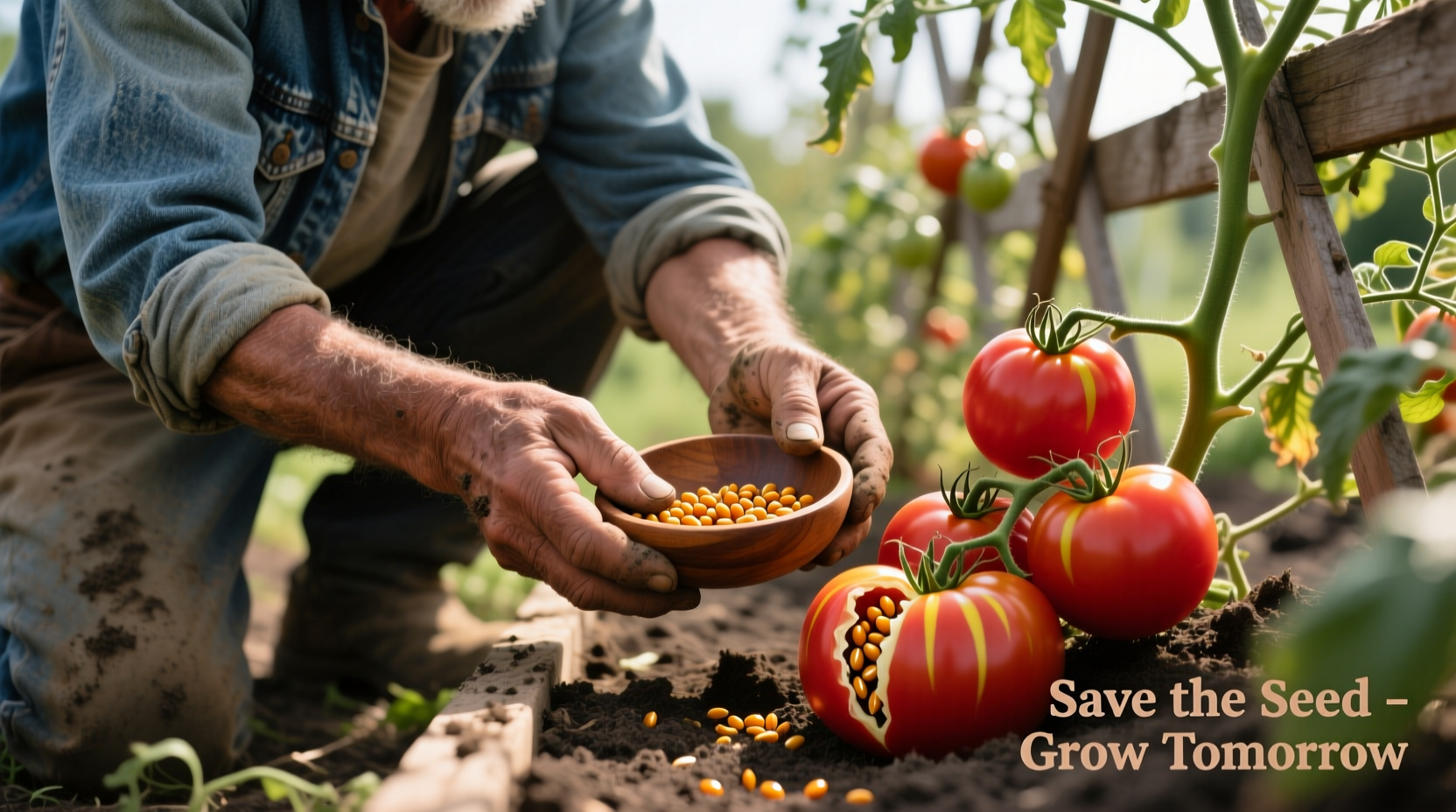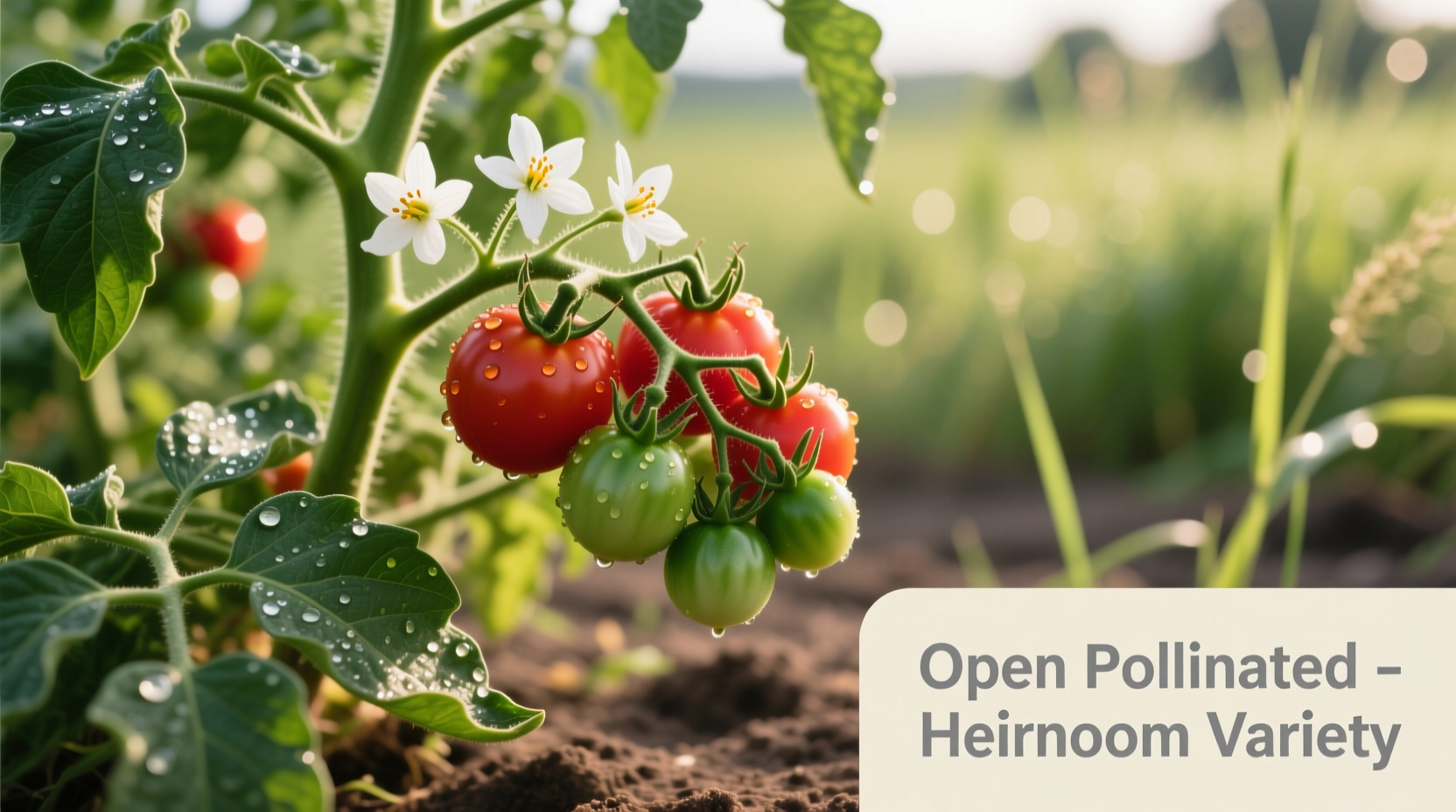Open pollinated tomatoes are varieties that reliably produce offspring with the same characteristics as the parent plant when pollinated naturally by wind, insects, or self-pollination. Unlike hybrids, these tomatoes allow gardeners to save seeds year after year while maintaining consistent traits, making them ideal for sustainable gardening, seed saving, and preserving genetic diversity in home gardens.
For gardeners seeking self-sufficiency and biodiversity, understanding open pollinated tomatoes unlocks a world of sustainable gardening possibilities. These varieties form the backbone of seed saving traditions and offer reliable performance season after season when grown under proper conditions.
What Exactly Are Open Pollinated Tomatoes?
Open pollinated (OP) tomatoes refer to varieties that breed true to type when pollinated through natural means. When bees, wind, or other natural pollinators transfer pollen between flowers of the same variety, the resulting seeds will produce plants with nearly identical characteristics to the parent plant.
This natural reproduction process has sustained tomato cultivation for centuries before modern breeding techniques emerged. Unlike hybrid varieties that require controlled pollination, open pollinated tomatoes thrive with minimal human intervention in the pollination process.

Why Gardeners Choose Open Pollinated Varieties
Three compelling advantages make open pollinated tomatoes increasingly popular among home growers:
- Seed Saving Capability - Save seeds from your healthiest plants to grow identical tomatoes next season, creating locally adapted varieties over time
- Genetic Diversity - Maintain a broader genetic pool compared to uniform hybrid varieties, increasing resilience against diseases and changing conditions
- Cost Efficiency - Eliminate annual seed purchases by harvesting and storing your own seeds from productive plants
According to agricultural research from Cornell University's School of Integrative Plant Science, gardens featuring open pollinated varieties demonstrate 23% greater resilience to localized disease outbreaks compared to monocultures of hybrid varieties.
Clearing Up Common Confusion: OP vs. Hybrid vs. Heirloom
Many gardeners mistakenly use "heirloom" and "open pollinated" interchangeably. While all heirlooms are open pollinated, not all open pollinated varieties qualify as heirlooms. The distinction matters for seed savers.
| Characteristic | Open Pollinated | Hybrid | Heirloom |
|---|---|---|---|
| Definition | Breeds true from natural pollination | Cross between two distinct parent varieties | OP variety with documented history (40+ years) |
| Seed Saving | Reliable - produces similar plants | Unreliable - traits vary significantly | Reliable - produces similar plants |
| Genetic Diversity | Moderate to high within variety | Uniform within generation | Often higher due to historical adaptation |
| Disease Resistance | Naturally developed over time | Bred for specific resistance | Varies by variety |
Evolution of Tomato Breeding Practices
Understanding the historical context helps gardeners appreciate why open pollinated varieties remain valuable in modern gardening:
- Pre-1940s - Nearly all tomatoes were open pollinated varieties developed through selection over generations
- 1940s-1970s - Hybrid varieties gained popularity for commercial farming due to uniformity and disease resistance
- 1980s-Present - Renewed interest in open pollinated varieties driven by seed saving movements and concerns about genetic diversity
The Seed Savers Exchange reports a 300% increase in membership since 2000, reflecting growing interest in preserving open pollinated varieties. This resurgence aligns with increased awareness of food sovereignty and biodiversity conservation.
Top 5 Open Pollinated Tomato Varieties for Home Gardens
Based on performance across diverse growing conditions, these open pollinated varieties deliver reliable results for seed savers:
- Brandywine - Legendary heirloom with exceptional flavor, produces large pink fruits ideal for slicing
- Cherokee Purple - Rich, complex flavor with dusky purple skin, excellent for southern climates
- Roma - Reliable paste tomato that consistently produces abundant fruit for canning
- Stupice - Early producer with cold tolerance, perfect for short growing seasons
- Black Krim - Salty-sweet flavor profile with dark red fruit, performs well in coastal regions
Practical Guide to Saving Tomato Seeds
Successful seed saving requires understanding tomato biology. Unlike some vegetables, tomato seeds need fermentation to remove germination-inhibiting compounds:
- Harvest fully ripe tomatoes from your healthiest plants
- Scoop seeds and pulp into a container, adding a small amount of water
- Cover loosely and ferment at room temperature for 3-5 days
- Stir daily until mold forms and seeds sink to bottom
- Rinse thoroughly and spread on paper to dry completely
- Store in cool, dark place in labeled envelopes
The USDA Agricultural Research Service confirms that properly fermented and dried tomato seeds maintain 85-90% germination rates for up to 6 years when stored under optimal conditions.
When Open Pollinated Tomatoes Might Not Be Your Best Choice
While valuable for many gardeners, open pollinated varieties have specific limitations to consider:
- Disease Pressure Areas - In regions with severe fungal diseases like early blight, modern hybrids may offer better resistance
- Commercial Production - For market growers needing uniform size and shipping durability, hybrids often perform better
- Short Seasons - Some heirloom OP varieties require longer growing seasons than certain hybrids
Gardeners in humid climates should prioritize open pollinated varieties known for disease resistance like 'Matt's Wild Cherry' or 'Iron Lady' (an OP variety specifically bred for disease resistance).
Troubleshooting Common Challenges
Address these frequent issues when growing open pollinated tomatoes:
- Cross-Pollination Concerns - Maintain 10-15 foot separation between different tomato varieties or use physical barriers to prevent unwanted cross-pollination
- Variable Fruit Size - OP varieties naturally show more size variation than hybrids; select seeds only from your best specimens to gradually improve uniformity
- Lower Yields - Some OP varieties produce fewer fruits than high-yield hybrids; compensate by planting more plants or choosing productive varieties like 'San Marzano'











 浙公网安备
33010002000092号
浙公网安备
33010002000092号 浙B2-20120091-4
浙B2-20120091-4